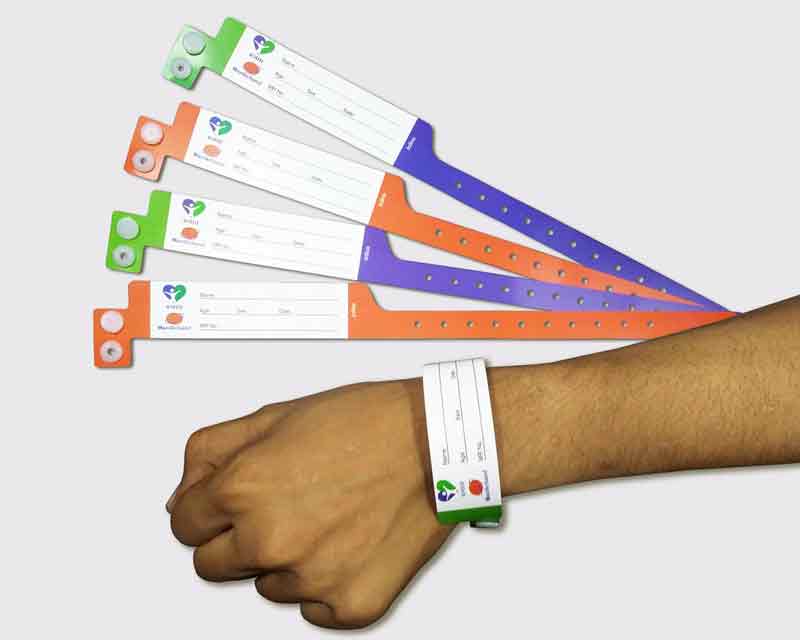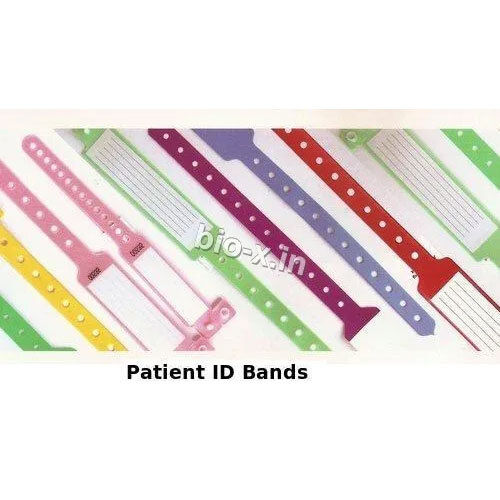Exploring the Benefits of a Patient Identification Band in Preventing Medical Errors
Exploring the Benefits of a Patient Identification Band in Preventing Medical Errors
Blog Article
Discovering the Different Kinds Of Patient Identification Band Made Use Of in Clinical Facilities
In the elaborate world of medical care, the important role of Patient Identification bands often goes undetected. These bands, varying from straightforward paper wristbands to sophisticated RFID bands, form the foundation of Patient safety and security procedures, ensuring accuracy in Patient Identification. The vast variety of these bands, each with its distinct advantages and limitations, is commonly neglected. As we browse through this subject, one may acquire understanding into the subtle complexities and essential significance of such bands in medical facilities.
Comprehending the Relevance of Patient Identification Bands
While they may appear like plain devices, Patient Identification bands play an essential duty in clinical facilities. These bands offer as a critical device for confirming Patient identity, stopping medical mistakes associated to misidentification. Patient Identification bands likewise aid in streamlining management tasks, guaranteeing accurate record-keeping and payment.
Standard Paper Wristbands: Their Usage and Limitations
Traditional paper wristbands have been a staple in Patient Identification across numerous clinical facilities. While their use prevails, they harbor particular restrictions that may influence their efficiency in Patient administration. This section will certainly concentrate on the extent of their application and the intrinsic disadvantages linked with their use.
Paper Wristbands: Use Range
In the world of Patient Identification, paper wristbands have actually long held an essential function. These bands are normally made use of in outpatient setups, where the Patient's remain is momentary. Regardless of innovations in technology, the humble paper wristband remains a reputable and economical service for Patient Identification in various healthcare scenarios.
Limitations of Paper Wristbands
Despite their prevalent use, paper wristbands are not without their downsides. Their physical longevity is just one of the substantial restrictions. Exposure to water, sweat, or rough handling can render them unreadable and even create them to degenerate. In enhancement, paper wristbands typically lack the technical capabilities of even more modern options, such as barcoding or RFID chips, limiting their performance to merely displaying created info. The inability to update or customize the data on the wristband is an additional drawback. Moreover, if the info is transcribed, readability can be endangered, causing prospective misidentification. Paper wristbands can create discomfort or skin irritability to some individuals, especially when used for extended durations.
Barcoded Wristbands: Developments in Patient Identification
While Patient Identification has long been a vital element of health care, the development of barcoded wristbands symbolizes a considerable leap ahead. These bands leverage the simplicity of barcoding technology, permitting for Patient info to be promptly scanned and accessed. They enhance the speed and accuracy of Patient Identification, lowering the threat of clinical errors associated to misidentification.
Superhigh Frequency Identification (RFID) Bands: an Action In The Direction Of Futuristic Health Care
The development of Patient Identification bands has actually caused the development of Radio Frequency Identification (RFID) Bands (patient identification band). These cutting-edge gadgets present key benefits for health care facilities, offering an extra effective and technologically progressed methods of Patient Identification. The application of RFID in health care is a significant action towards a more advanced method to Patient administration and safety
Recognizing RFID Bands

RFID Bands: Key Benefits
Largely, these bands improve Patient safety by supplying exact, rapid Identification, thereby decreasing clinical mistakes. RFID bands can save a substantial amount of Patient data, including medical background and allergic reactions, making it possible for individualized care. In general, RFID bands represent a considerable innovation in Patient Identification technology, benefiting both clients and health care carriers.
Executing RFID in Health Care
As we enter a highly innovative period, the execution of RFID bands in medical care comes to be significantly essential. These bands provide a seamless way to track and identify clients, ensuring their safety and enhancing performance in therapy procedures. RFID bands provide countless benefits over typical Identification techniques. They can keep a large amount of data, including the Patient's case history and treatment strategies, which can be conveniently accessed by doctor. This data helps medical professionals make educated decisions regarding the Patient's treatment plan. In addition, RFID bands minimize medical mistakes by supplying precise Patient Identification, which is crucial in protecting against misdiagnosis or incorrect medication management. Therefore, the implementation of RFID bands is a considerable step in the direction of improving Patient safety and security and health care delivery.

Color-Coded Wristbands: Assisting in Quick and Accurate Medical Diagnosis
In the busy have a peek here atmosphere of a medical center, color-coded wristbands have emerged as vital devices for swift and accurate Identification of a person's clinical condition. These wristbands, put on by individuals, carry specific shades that correspond to various clinical problems or statuses. As an example, red might indicate allergic reaction dangers, while yellow might indicate an autumn risk. This system is developed to supply instant visual hints to doctor, improving Patient security and care quality. In emergency situation situations, using these wristbands permits rapid decision-making. The effectiveness of color-coded wristbands depends on the harmony of shade interpretation across medical care institutions, needing usual standards for constant application.
Methods for Reliable Execution and Monitoring of Patient ID Bands
Achieving optimal use of Patient Identification bands necessitates a well-structured strategy for their implementation and management. The primary step includes training all health and wellness workers on the significance of properly applying and reading these bands. Secondly, medical facilities ought to standardize using ID bands across all divisions, making certain harmony and decreasing discrepancies. Normal audits must be carried out to confirm adherence to policies and to fix any kind of variances. Patient education is additionally vital; individuals should understand the objective of the bands and the requirement for their constant wear. patient identification band. It's necessary to have a backup strategy in area, such as barcode scanning or biometrics, to make sure that Patient Identification is never jeopardized.
Verdict
Patient Identification bands are important in clinical centers to ensure security and accuracy. Efficient execution and monitoring of these bands can significantly reduce medical errors, increase effectiveness, and enhance general Patient care.
These bands, varying my latest blog post from easy paper wristbands to sophisticated RFID bands, develop the foundation of Patient security procedures, making sure precision in Patient Identification.The evolution of Patient Identification bands has actually brought concerning the appearance of Radio Regularity Identification (RFID) Bands. Generally, RFID bands stand for a considerable improvement in Patient Identification technology, profiting both people and medical care carriers.
RFID bands lower clinical errors by offering accurate Patient Identification, which is vital in stopping misdiagnosis or wrong medication management. Patient education is also crucial; individuals should understand the objective of the bands and the requirement for their try these out constant wear.
Report this page